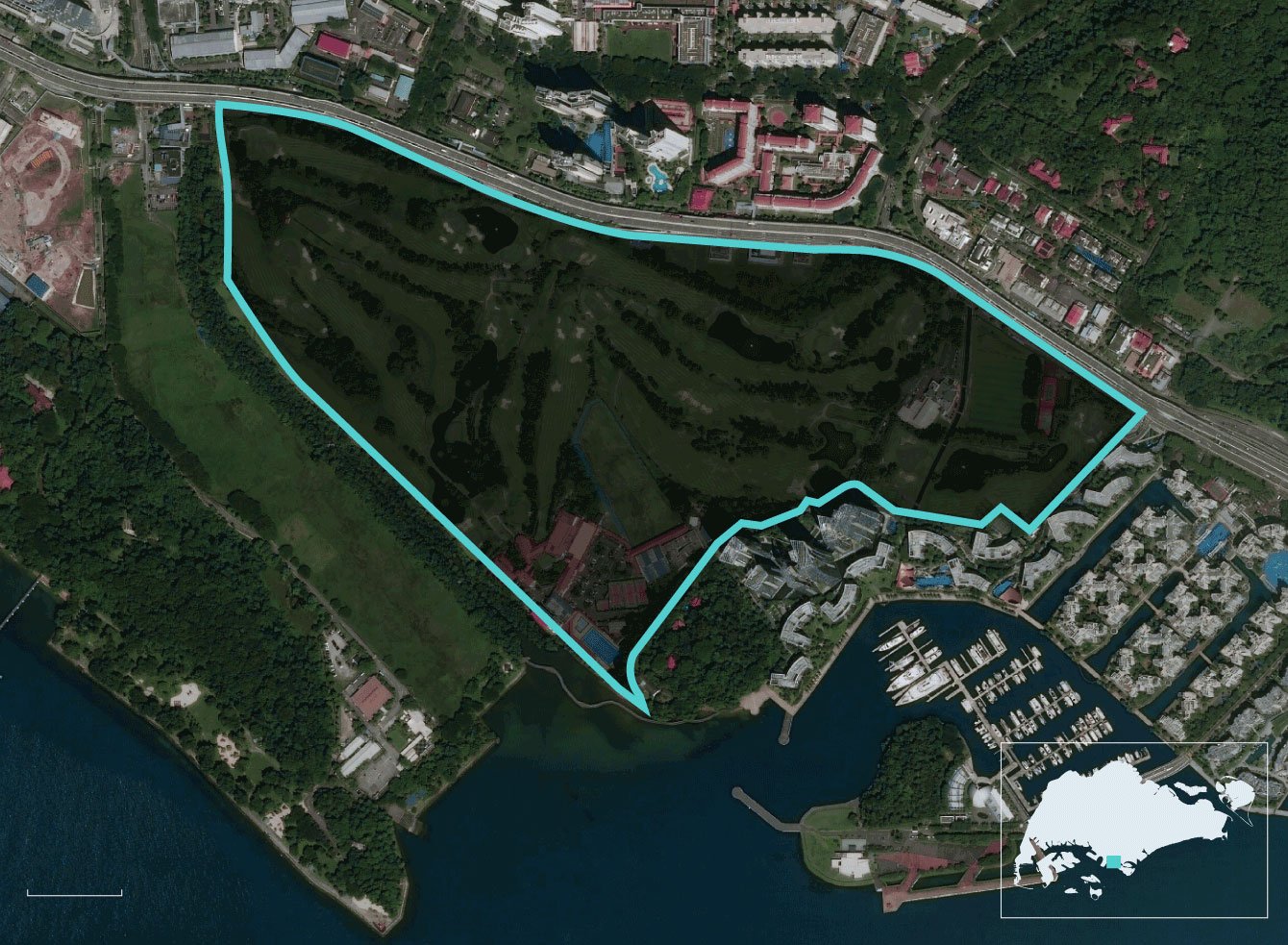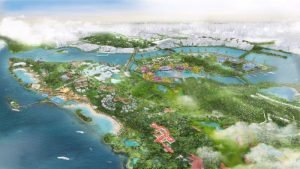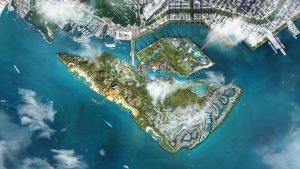Around 6,000 Housing Board flats will be built on the Keppel Club site in the Greater Southern Waterfront (GSW), with the first Build-To-Order (BTO) project to be launched for sale within three years.
These units are part of the 9,000 homes that will be built on the 48ha site, which will offer unique waterfront living that is close to nature, announced National Development Minister Desmond Lee on Tuesday (April 12).
The remaining 3,000 units are expected to be private housing.
A mix of public and private housing developments will be progressively scheduled for launch in the next three to five years, said the Urban Redevelopment Authority (URA).
The 48ha site at Keppel Club – about half the size of Bidadari estate – comes under the mature town of Bukit Merah and is bounded by Telok Blangah Road, Berlayer Creek and Bukit Chermin. It has been earmarked for residential use in the URA Master Plan since 2014.
Mr Lee said: “Given its central location and the two MRT stations nearby, we will seek to keep the estate car-lite and enable residents to get around easily by walking or cycling.”
Within the site, close to 10ha – about 20 per cent of the site area and the size of about 18 football fields – will be set aside as parks and open land.
This includes four green corridors that will run through the estate and serve as recreational spaces – the Central corridor, Berlayer Corridor, Henderson Corridor and the Northern Corridor.
Mr Lee said the plans are guided by recommendations from an environmental impact study (EIS) and feedback from nature groups.
These may be fine-tuned after public consultation on the EIS report.
Housing blocks will be designed with staggered building heights which step down towards the green spaces, to give residents the view of greenery at their doorstep, HDB said.
They will also feature skyrise greenery and landscaped terraces.
Green roofs on lower-rise blocks will serve as additional habitats for butterflies and smaller urban bird species such as the locally endangered blue-crowned hanging parrot and oriental magpie-robin.
“As the site is quite close to the city centre, we will bring homes closer to jobs. This is part of our effort to move towards having more housing options and mixed-use development in our central region,” said Mr Lee.
All development works will be confined within the brownfield site of Keppel Club, he added. Brownfield sites are land that had previous developments on them.
When the lease of the golf course runs out, the authorities will redevelop the land for housing, said Mr Lee.
A Singapore Land Authority spokesman said the lease for the existing golf course site expires June 30. The existing clubhouse has until March 31 next year to clear and reinstate the site.

Mr Lee added that there are also plans to transform the former Pasir Panjang Power Station buildings into a distinctive and vibrant mixed-use district characterised by its unique industrial heritage and waterfront location.
On whether the BTO projects in the Keppel Club site will fall under the prime location public housing (PLH) model, HDB said the model will be applied to selected public housing projects in prime and central locations such as the city centre and surrounding areas, including the GSW.
These are areas that have very high market value and would require significant additional subsidies to keep flats affordable, said HDB.
While the Keppel Club site is within the GSW, the authorities will consider a range of factors – such as the project’s location, attributes and market value – before deciding whether to apply the PLH model, it added.
Owners of flats under the PLH model are subject to stricter buyer and selling conditions, including a 10-year minimum occupation period and having the additional subsidy clawed back by the Government should they sell the units.
Property analysts said that it is likely that BTO projects in the GSW will fall under the PLH model.
“Given the attractive site attributes, we would consider the future flats on the Keppel Club site to be in the ‘limited edition’ category and all the new HDB flats offered there should come under the PLH model because of their extremely prime location,” said PropNex Realty head of research and content Wong Siew Ying.
Huttons Asia senior director of research Lee Sze Teck noted that two-thirds of the 9,000 units are public housing, which affords more opportunities for Singaporeans to live by the coast.
“By setting aside a significant amount for public housing, the Government ensures that more people get to stay in prime locations and not just the wealthy,” he said.
He expects a four-room unit to range between $650,000 to $760,000 after accounting for additional subsidy under the PLH model.
Mr Lee said HDB is building more homes to cater to the strong demand for housing from echo boomers – children of the baby boomer generation – and the increasing societal trend of having smaller households.
When launched, the BTO project will kick-start the transformation of the GSW into a mega waterfront development along Singapore’s southern coast.
It is expected to draw strong interest, based on previous BTO launches in the area.
The Telok Blangah Beacon BTO project launched in May 2021 saw more than 23.3 applicants vying for each available unit – one of the highest rates in recent years.
First announced in 2013, the GSW comprises 30km of coastline stretching from the Gardens by the Bay East area to Pasir Panjang.
It contains 2,000ha of land – six times the size of Marina Bay and twice the size of Punggol.
source: The Straits Times




